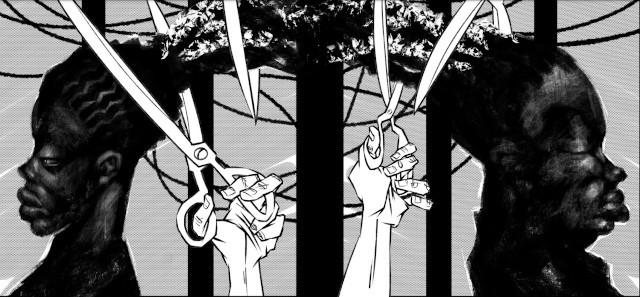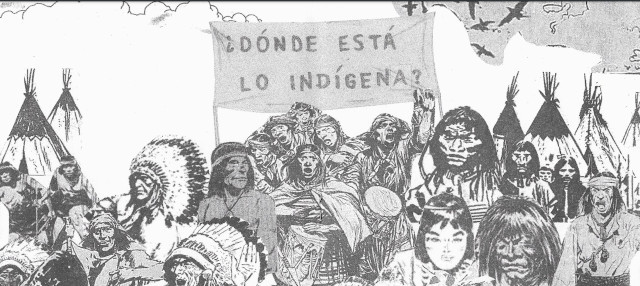Critical antiracisms
In this exhibition, the relation of representation and visuality with the production of racist ideas and practices as well as antiracist responses is a key question. In this context, mobilising a critical antiracist literacy ––a conceptual, actionable, and self-reflexive approach to contribute to creating a more critically informed and just world for everyone–– is necessary. Questions such as how do we look, who gets to represent whom and what, and who gets to engage ––and benefit from or is negatively affected by–– such representations, including ourselves, and in what terms, gravitate at the centre of the materials here showcased. As with all social phenomena, seeing is produced within a field of power relations and is never a neutral act. Approaching the visual dimensions of racism through a social justice-oriented lens combined with a critical antiracist intersectional framework allows us to identify how different social categorizations, such as class, gender, age, and ability, among others, intersect with oppressive racial ideologies, such as whiteness and mestizaje, to produce specific ways of seeing, acting, and organising social life.
The (in)visibility of racial priviledge
An antiracist approach pays attention to the ways racism and its related oppressions are lived and contested by individuals and communities. This approach centres the presence, voices, perspectives, feelings, knowledge, needs, demands, and lived experiences of those who are the subjects of intersectional racialised oppression. Importantly, a critical antiracist intersectional perspective asks us to look at ourselves and acknowledge our own privileges and/or oppressions* urging us to work actively in dismantling them and to contest all systems of oppression. Such an approach challenges the accepted notions that promote social abuse and emphasizes the need to take action to correct social inequality. This includes examining the mechanisms of racism by scrutinising the assumptions and practices that are usually not questioned as they are legitimised and deeply engrained in everyday life. A critical antiracist perspective considers, for example, how racism can sometimes operate while being unacknowledged because it is deeply normalised and entrenched in the most quotidian practices and spaces –including our own lives– and, at the same time, it considers the role of institutions.
The aim of an antiracist approach is, through critical thinking and self-reflection, to uncover and actively contest the workings of racism, our place in it, and its conjunctions with other forms of oppression and dehumanisation. We need to understand our own role in the workings of structural racism, and how it directly or indirectly oppresses and/or privileges us personally, even though we might not be fully aware of it. To achieve this, we need to do the work of acquiring a critical antiracist literacy. We need to engage with the information available on critical antiracism, and on racial privilege and how to dismantle it. A critical antiracist literacy means listening attentively to those speaking from sites of racialised oppression—and see how those oppressions relate to our own experiences and/or how our privileges reinforce those oppressions.
Towards an antiracist literacy
It is central that people in positions of privilege contribute to antiracism by learning not to take up space in ways that reinforce their privileges and other people’s oppressions. It is also important to create spaces, dynamics, and ways of acting and relating that make sure marginalised people take centre stage in whichever areas they have been historically marginalised. This includes taking steps to facilitate their access to decision-making and to representational and material resources on their own terms.
Learning how to dismantle racial privilege and to contest racist oppression in our own lives is key to creating a world that is more just for all. Critical racial literacy is an essential tool for everyone interested in countering racism: those living in positions of intersectional racialised privilege and those experiencing racist oppression.
* Oppression refers here to the systematic mistreatment and marginalization of certain groups based on social categories such as racialisation, gender, sexuality, ability, age, etc. Privilege, on the other hand, entails the unearned advantages individuals and groups receive due to their membership in dominant social categories. These concepts are inextricably intertwined, as privilege perpetuates oppression by maintaining hierarchies and unequal power dynamics and access to resources. Recognizing and challenging privilege is crucial for dismantling systems of oppression and striving for a more equitable and socially just society.



